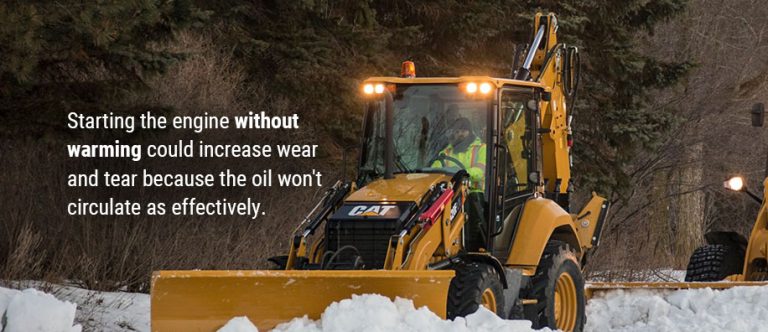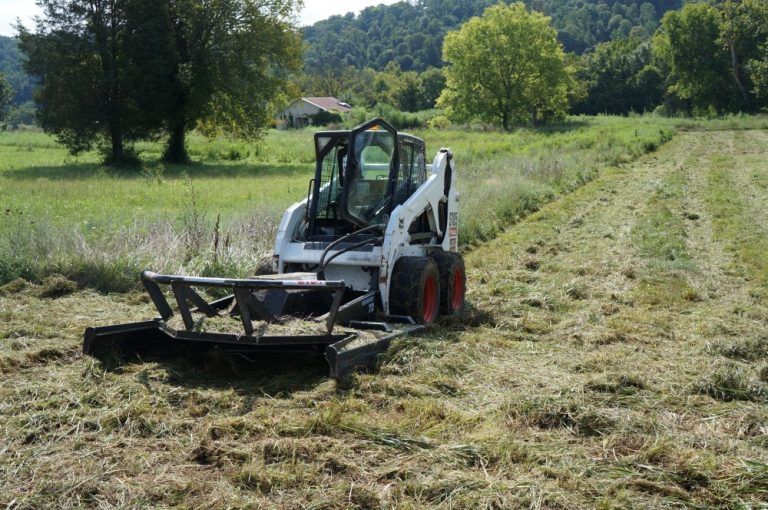The Ultimate Guide To Using Mini Excavator Forks For Material Handling
Keywords: mini excavator forks, excavator fork attachment, forks for excavator
You can attach Mini excavator forks to a mini excavator to increase its versatility and use for a wider range of tasks. These forks are designed to lift and move materials such as pallets, logs, and other bulky items that are too heavy or awkward to lift by hand. Mini excavator forks have two or more tines attached to a mounting plate. The mounting plate is then attached to the excavator’s boom or arm using pins or quick couplers. The tines are adjustable.

When using mini excavator forks, it is important to follow proper safety guidelines to avoid accidents or damage to the equipment. Operators should ensure that the forks are securely attached and that the load is evenly distributed across the tines. They should also know about the excavator’s weight capacity and avoid overloading it.
These pallet forks have been designed to excel in unloading, loading, moving, and lifting materials from one location to another. The attachment is engineered to match your work demands and ensure the timely completion of your projects. This universal device can lift practically anything you require, and its multifunctional capabilities will enhance the overall productivity of your mini excavator.
Some mini excavator pallet forks offer unparalleled power, strength, and durability to ensure your job site’s success. Choose our attachment for your excavator to accomplish your tasks more efficiently and effectively and experience a level of productivity you have not seen before.

Types of mini excavator forks
Different types of mini excavator forks are available in the market, each with unique features and capabilities.
Fixed Forks:
Fixed forks are the simplest type of mini excavator forks. These forks are fixed to the frame, with no pivot point. It means that the forks slide along the frame, and when lowered to the ground, the frame and forks take all the impact. Fixed forks are best for lifting heavier loads, providing better stability and control.
Floating Forks:
Floating forks, also known as pivoting forks, are designed to pivot at a single point, allowing the forks to move as the operator tries to locate the material. This makes picking up and moving loads easier, especially irregularly shaped objects. Floating forks also can maneuver up and down, which reduces the impact on the bar and frame when the forks hit the ground.
Telescopic Forks:
Telescopic forks are designed to extend and retract, providing extra reach when lifting materials. These forks are best for loading and unloading materials from trucks or trailers. You can adjust the length of the forks depending on the size of the material being lifted, making them a versatile attachment for a mini excavator.
Clamp Forks:
Clamp forks are designed to pick up irregularly shaped materials that cannot be picked up with regular forks. The forks have a clamp mechanism that securely grips onto materials such as pipes, logs, and poles.
Grapple Forks:
Grapple forks are mini excavators that pick up and hold onto materials such as rocks, debris, and branches. The forks have a grappling mechanism that closes around the material and securely holds it.
Side-Shift Forks:
Side-shift forks are to move to the left or right, allowing operators to position the forks accurately when picking up materials. The attachment is particularly useful when working in tight spaces or lifting materials from difficult angles.

How to install mini excavator forks?
Installing mini excavator forks is a straightforward process that can be done by following a few simple steps.
- Before installing mini excavator forks, ensure they are compatible with your machine. Check the manufacturer’s instructions and specifications to ensure the forks suit your excavator model and weight capacity.
- Park the machine on a level surface and engage the parking brake. Turn off the engine and remove the key from the ignition. Lower the bucket to the ground and engage the hydraulic safety lock.
- Connect the mounting plate to the excavator’s arm using the bolts and nuts provided. Tighten them securely with a torque wrench to the manufacturer’s specifications.
- Attach the fork frame to the mounting plate using the bolts and nuts provided.
- Attach the forks to the fork frame using the locking pins provided. Make sure the forks are secure and properly aligned.
- Start the engine and operate the machine’s hydraulic system to raise and lower the forks.
- Check for any leaks, unusual noises, or vibrations. If everything is working properly, the installation is complete.
- Always follow safety guidelines when operating mini excavator forks. Never exceed the weight capacity of the machine or forks. Keep a safe distance from people and objects when lifting or moving loads.
- Remember to refer to the manufacturer’s instructions and safety guidelines for your specific mini excavator forks model before installation.
Different uses of mini excavator forks
Mini excavator forks are versatile attachments used for various tasks in different industries.
Material handling: Mini excavator forks commonly move pallets, boxes, and other materials around construction sites or warehouses. They can also be used to load and unload trucks or other vehicles.
Landscaping: Mini excavator forks are useful for handling materials like logs, stones, and boulders during landscaping projects. They can also move plants and trees from one location to another.
Agriculture: Mini excavator forks can be used to move bales of hay or straw and other farm materials. They can also move livestock feed or equipment around a farm.
Demolition: You can use it to remove debris and other materials from demolition sites. They can also be used to break up concrete or other materials.
Snow removal: Mini excavator forks can be used to move snow, especially in areas where larger equipment may not be able to fit. They can also clear snow from sidewalks and other tight spaces.
Utility work: You can move pipes, cables, and other equipment during installation or repair with the help of mini excavator forks.
How to remove mini excavator forks?
- Removing mini excavator forks can be done by following these steps:
- Place the mini excavator on a level surface and engage the parking brake.
- Remove any debris or dirt from the area around the fork attachment point.
- Lower the forks to the ground and use a pry bar to loosen any debris or dirt that may have accumulated around the attachment points.
- Use a wrench or socket to remove the locking pins from the attachment points.
- Carefully lift the forks off the attachment points and set them aside.
- Clean the attachment points and the forks before storing them.
- It is important that the exact steps for removing mini excavator forks may vary depending on the make and model and the type of fork attachment being used.
- Always refer to the manufacturer’s instructions for specific details and safety precautions.
Why would you use Pallet Forks over a Telehandler or Forklift?
The 360 excavators have come a long way in versatility, and with the Tilt Rotate Hitch, it can now spin on the spot and has greater reach. However, there are some job sites where space is limited, and it is impossible to have multiple machines side by side. In such situations, using a 360 excavator with Pallet Forks attachment can eliminate the need to hire or have the cost of a telehandler and an operator. Furthermore, if the job site is boggy or difficult to maneuver, a 360 excavator can handle it better than a telehandler.
Fixed Vs. Floating Forks
Fixed Forks are attached to the attachment frame and slide along the frame with no pivot point. This design means that when the forks hit the ground, the frame and forks take all the impact. On the other hand, Floating Forks have a pivot point that allows the forks to move as you locate and pick up materials. Moreover, the Floating Forks can maneuver up and down, reducing the impact on the frame and forks when they hit the ground.

Conclusion
In conclusion, mini excavator forks are an excellent attachment that can significantly increase the versatility of your mini excavator. They come in different types and sizes, making them suitable for various applications, such as landscaping, construction, agriculture, and demolition. Installing and removing mini excavator forks requires proper safety measures and following manufacturer instructions to prevent damage to the attachment and the excavator—regular maintenance to prolong their lifespan. You can contact us for any information about the mini excavator or attachments.


